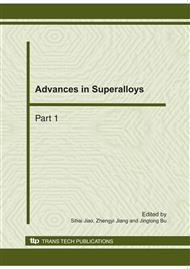p.34
p.38
p.42
p.63
p.70
p.75
p.79
p.89
p.93
Fundamental Aspects of Stray Current Corrosion on Buried Pipeline
Abstract:
Stray current is one of the main reasons in pipeline failure. In pipeline design and maintenance, it is important to know the fundamentals influencing stray current corrosion. However, it is difficult to control stray currents because many factors can affect its inflow points, outflow points and current densities. Several fundamental aspects, such as soil resistivity, coating worn rate, buried depth and horizon distance have been studied in order to find useful information in pipeline design. The results show stray current can be influenced by soil resistivity, coating worn rate and buried depth. It is suitable to control stray current corrosion by increasing soil resistivity, buried depth, horizon distance and decreasing coating worn rate. However, there are boundary values in controlling stray current corrosion by increasing soil resistivity, buried depth and horizon distance. For example, in this laboratory study, the boundary horizon distance is 200mm.
Info:
Periodical:
Pages:
70-74
Citation:
Online since:
October 2010
Authors:
Keywords:
Price:
Сopyright:
© 2011 Trans Tech Publications Ltd. All Rights Reserved
Share:
Citation:


